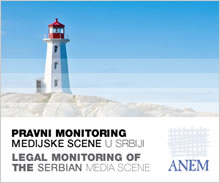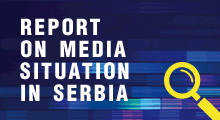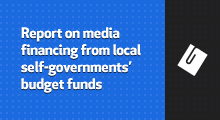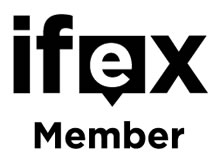Home
/
Media Scene
/
In Focus
14. 10. 2005
4,000 CHANNELS IN EUROPE......, BUT WHAT'S ON TV?
Brussels and Budapest - 11 October 2005. Full report on Serbia http://www.anem.org.yu/download/OSIreportser1.pdf Television remains the primary source of information for most people in Europe, despite the dynamic progress of new information technologies. But the pivotal role of television in supporting democracy in Europe is under threat. Public service broadcasters are compromising quality to compete with commercial channels, and many of them depend on Governments or political parties. Meanwhile, ever-larger concentrations are developing in the commercial sector, often with clear political affiliations. These developments jeopardize broadcasting pluralism and diversity, with the new democracies of Central and Eastern Europe most at risk. These are the main findings of the monitoring report `Television across Europe: regulation, policy and independence`, released today in Brussels. The report, produced by the Open Society Institute, Budapest, covers 20 European countries - EU members, candidates and potential candidates. At 1662 pages, it is the largest ever comparative survey of its kind. The report analyses broadcasting across the continent and addresses policy recommendations to national and international authorities and groups. The report includes a regional overview and twenty individual country reports covering: Albania; Bosnia and Herzegovina; Bulgaria; Croatia; Czech Republic; Estonia; France; Germany; Hungary; Italy; Latvia; Lithuania; Poland; Republic of Macedonia; Romania; Serbia; Slovakia; Slovenia; Turkey; the United Kingdom. While there are nearly 4,000 television channels in Europe, the report reveals that the television market is in reality highly concentrated in terms of both ownership and audience shares. In most countries, a handful of channels attract the vast majority of viewers. Ownership structures are controlled by a few companies and often shrouded in secrecy. Political pressure on regulators and public service broadcasters is widespread. In Europe, universally available high quality programmes are scarce. Investigative journalism and minority programming are hard to find in both public service and commercial broadcasting. Newscasts are often tabloid, particularly on commercial channels. As a result, viewers often do not receive the information necessary to make informed democratic choices. Whether the switchover to digital broadcasting will benefit the public remains to be seen. Digitalization may instead enable leading commercial players to further erode public service broadcasting, undermining pluralism and diversity, as well as high quality content. RECOMMENDATIONS The report contains a series of recommendations for national governments, the European Union (EU), the Council of Europe (CoE), the Organisation for Cooperation and Security in Europe (OSCE), and other interested parties. These include: On media policy: . National governments and international organizations should live up to their commitments to the dual system of public and private broadcasters as an essential element of democracy. Market forces alone must not determine broadcasting policy. . Governments and parliaments should ensure the political and operational independence of broadcasting regulators. . The regulators must have the resources and powers to monitor broadcasters, and their compliance with legislation and license conditions. . The European Union should establish an independent agency to monitor media markets and media concentration in the EU and on global markets. On public service broadcasting: . Broadcasting regulators should ensure that the public service broadcasters' programming complies with a clear public service remit. . Governments and parliaments must ensure that the funding of public service broadcasters is transparent. . National media policy should include strategies for the development of local television stations and community media. On commercial broadcasting: . Governments and parliaments should adopt legislation ensuring transparency of ownership of all media outlets, including external investors. . The EU should introduce legislation to ensure transparency of media ownership. . Commercial broadcasters should be encouraged or obliged to broadcast public service programmes. On digitalisation: . Public service broadcasters should automatically receive licenses for digital broadcasting. . Regulators should allocate digital licenses to a diverse range of operators to ensure that dominant positions in analogue broadcasting are not extended. . Parliaments should adopt legislation to prevent the emergence of monopolies of operators involved in the digital chain - such as digital multiplex operators, television stations, program packagers and software providers. The report "Television across Europe: regulation, policy and independence" was prepared and published by EUMAP, the Open Society Institute's EU Monitoring and Advocacy Program, in cooperation with OSI's Network Media Program.
-
No comments on this topic.





